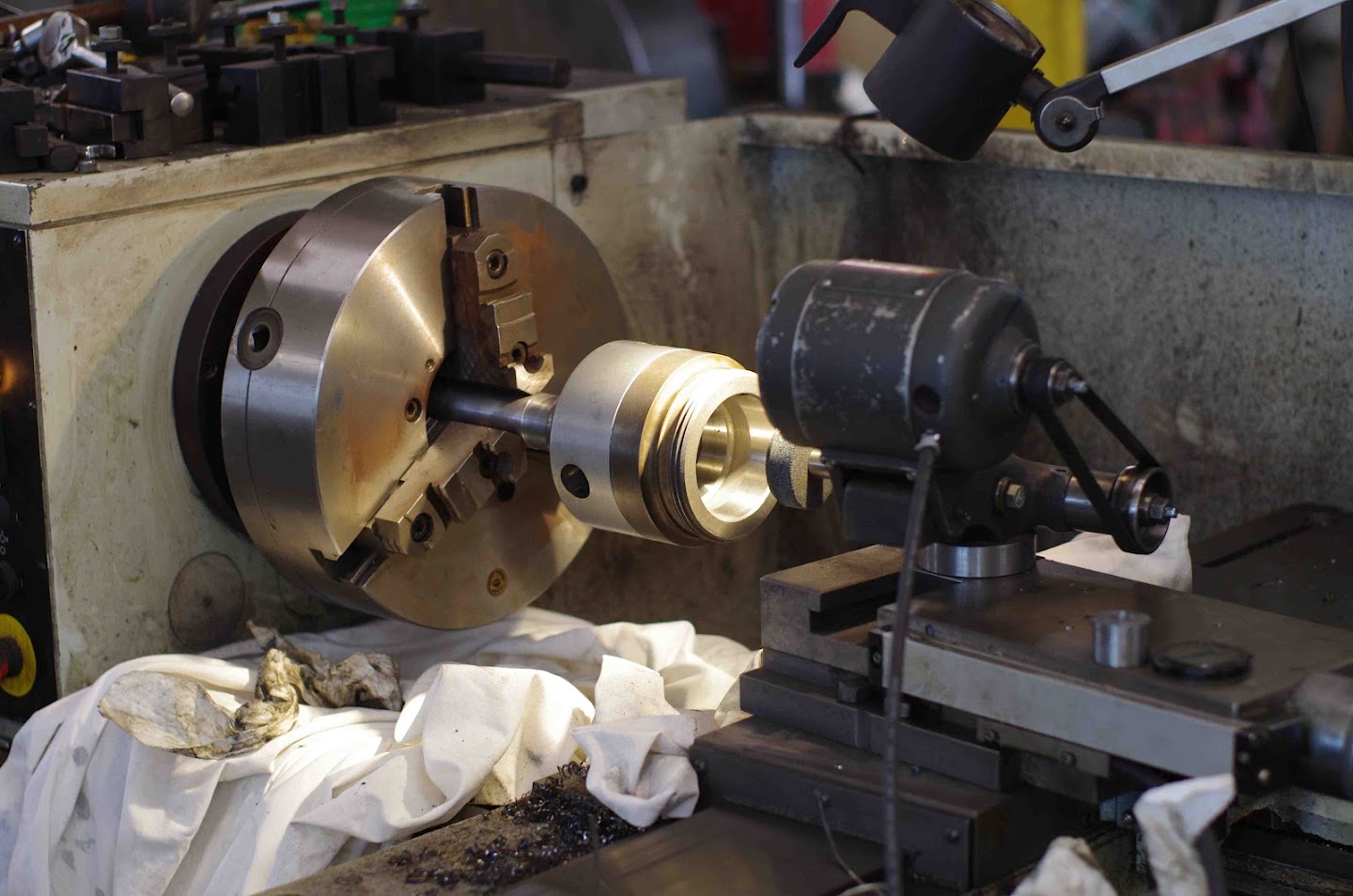I posted this in the "will it thread" thread, but might be useful here, too?
RE toolpost grinding on the lathe, a little tip:
If the grinder can be mounted on the topslide (compound slide in the USA), swivel the slide around until it's almost parallel to the lathe spindle axis - if the angle between axis and topslide is 5.74 degrees (as accurately as you can set it, 5.75 is close enough
) there is a 10:1 ratio between the topslide movement and diameter, so advancing the topslide 0.001" will take off 0.0001", allowing you a bit more control over grinding depth. Grinding cuts should be of the order of "tenths", not thou", it's a finishing process, not a roughing process
Another tip: *
cover the ways!* The grinding dust is incredibly destructive to machines, being a mix of fine metal dust and abrasive particles - I've used oily cloth (with a fire extinguisher handy) and a "hood" in line with the sparks, attached to my workshop vacuum, to try to keep the dust under control. I still need to go over the lathe afterwards in minute detail with a soft brush and vacuum though! Look at the hoods fitted to surface grinders for a few hints.
Yet another tip - it's good practice (and
very much safer) for the work and grinding wheel to meet "head on", it prevents the wheel hogging into the work - and gives a better finish.
If the wheel and work are moving in the same direction and there's the slightest slack in the setup, the wheel and part will try to close up, possibly bursting the wheel; head-on they force themselves apart removing the load: a burst wheel is a bit like a grenade, but harder to remove the shrapnel, being non-magnetic`.
If your lathe doesn't run in reverse, the wheel wants to be running *anti-clockwise* for external grinding, *clockwise* for internal, both viewed from the tailstock. If it runs in reverse, grinder clockwise for both internal and external, and reverse the spindle for external grinding only, normal forward rotation for internal grinding. If concerned about a screw-on chuck loosening, don't be - the loads in grinding are much, much lower than cutting loads! Belt and braces would be a drawbar through the lathe spindle, pulling on a "spider" against the chuck face, but not likely to be necessary, I'd think.
Just my ha'pennorth,
Dave H. (the other one)











